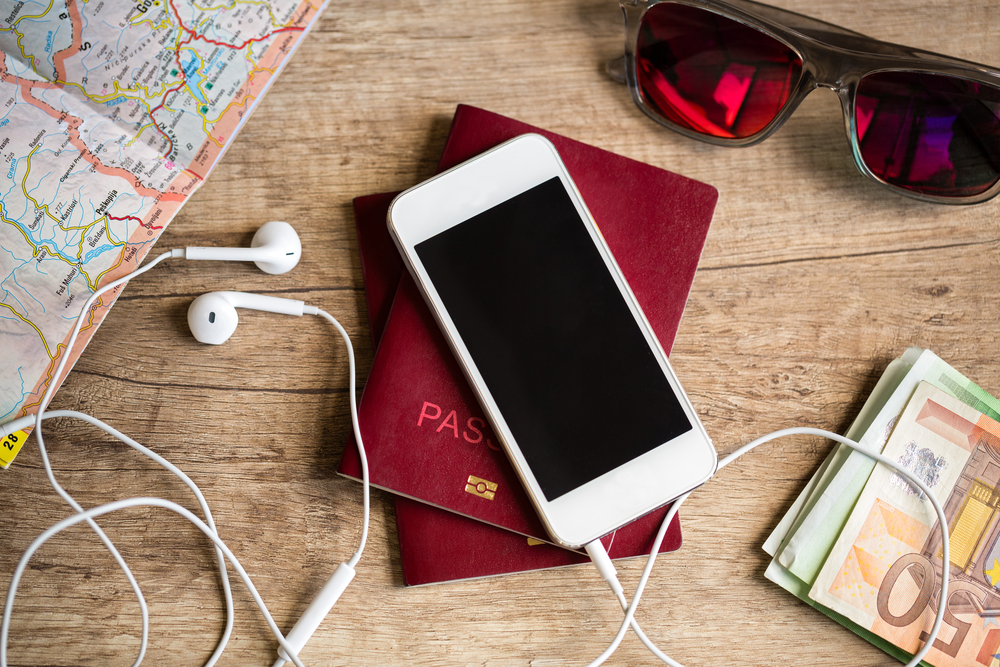I was 43 years old when I learned that I had an incurable disease of the retina that would cause permanent vision loss. I was devastated and could only think of how sad my life would be without being able to play basketball, ride my bicycle, travel to new destinations, and to enjoy the finer things in life. Fortunately, all of my preconceived ideas were wrong! I met a group of people with macular degeneration and they told me about all the fun things they did together. They told me about how they went horseback riding, bowled, golfed, rode tandem bicycles, and traveled across the United States together. The purpose of this article is to share with you many helpful tips and strategies to allow you to enjoy yourself when you travel and play outdoors. Here are some visual aids and techniques when traveling.

Sunglasses and Filters
Sunglasses are one of the most helpful visual aids to improve your eye comfort and vision when traveling outdoors. There are many different color filters that are made of various materials to maximize your vision. Often, people purchase sunglasses that are too dark and they do not allow a person to see details most clearly. Amber and yellow filters are very helpful for people with macular degeneration and diabetic retinopathy while green and plum lenses are very comfortable for people who are in the direct bright sunlight. Another type of sunglass lens that is very helpful is polarized lenses. These lenses filter light from reflected surfaces, such as the water or a windshield. Thus, a polarized sunglass will be very helpful if you will be traveling on an ocean cruise or traveling in the car on a road trip.
Hats and Visors
Hats and visors are another excellent visual aid to reduce glare. Wearing a hat or visor with a wide brim made of a dark color will reduce glare caused by the bright sidewalk. Many hats and visors are shaped such that they also filter light coming from the sides.
Telescopes
Telescopic glasses are very helpful low vision aids that allow people to identify distant objects very clearly. A telescope consists of two lenses separated by space. They are available in different powers to provide different levels of magnification. The larger the telescope, the higher the magnification. Telescopes are available to be mounted in glasses or they may be held in your hand. By looking through a telescope or telescopic glasses, the world will be magnified, similar to looking through a pair of binoculars. Telescopes are very helpful for sight seeing, reading traffic signs, watching plays, sporting events, and for people watching. Consult with your low vision optometrist for a demonstration of these devices!
Magnifiers
Magnifiers are very helpful tools when traveling. They allow one to read menus, identify your currency, read bus schedules, and to also see the slot machines! Magnifiers are available in various shapes, sizes, and forms. Some are simple lenses that are held in your hand while others are placed in glasses to allow you to use your hands to perform other tasks. I will never forget the first time that I prescribed magnifying glasses to allow my patient to play Black Jack in Las Vegas. He came back from his vacation ad was so happy that he was able to play cards again!
Mobility Cane
A mobility cane is very important to take when you travel because it informs others that you have a vision problem and it allows people to assist you by moving out of the way as you walk. I recall how strongly I resisted the use of my long white cane. I did not feel that I needed it because I still had vision. However, when we walked on the Las Vegas strip, I could not enjoy the sights of the new hotels because I had my head tilted towards the sidewalk so that I could see where to walk. My wife told me, “Why don’t you try using your cane so that you can enjoy the scenery?” I reluctantly agreed and was so excited to be able to lift my head and look around at all the hotels and people. People moved out of our way as we walked and it made me feel as though I was Moses walking through the parted Red Sea!
Smart Phones
Another very helpful tool to use when traveling or performing activities away from your home is the use of the cell phone. Today, there are cell phones called Smart Phones. These phones are essentially a small computer that has the ability to magnify the print on the screen and they are also able to talk to you and understand your voice! I personally use the Apple iPhone 5 and this device is extremely helpful. I can ask it to give me directions to specific areas to walk and visit, or I can ask it where the nearest bank, restaurant, or hotel is. When my phone locates the available options, it says the options aloud. My phone is also helpful because it can take pictures of objects and tell me what they are. When shopping, my phone will scan the bar code and tell me what is in the package and it will also tell me the price. Lastly, my phone has the ability to identify the currency, colors of clothing, and it also can help me to obtain a taxi cab or a bus ride.
All in all, there are many tools and techniques that are available to allow people with low vision or blindness to perform enjoyable activities away from home and to travel. I never thought that I would be able to enjoy all the things that I now do as a person who is totally blind. To learn more about these low vision aids and strategies, contact your low vision agency.
2/5/15
 Bill Takeshita, OD, FAAO
Bill Takeshita, OD, FAAO
Chief of Optometry
Center for the Partially Sighted

